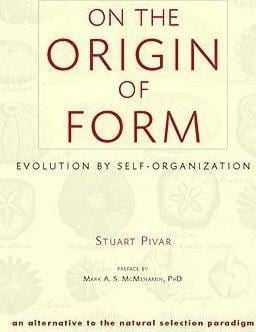Name Stuart Pivar Role Chemist | ||
 | ||
Books Lifecode: The Theory of Biological Self Organization | ||
Stuart Pivar (born 1930) is a chemist, art collector and author from Brooklyn, New York.
Contents

New York art world
Pivar earned a B.Sc in chemistry at Hofstra University. An inventor, he made a large fortune in plastics, founding Chem-Tainer industries in 1959. The business specialised in bulk-storage plastic containers. While remaining active in the plastics industry, he became an independently wealthy investor and buyer on the art scene. Pivar soon met Andy Warhol, becoming one of his closest longtime friends. With Warhol he would go on regular shopping trips to buy "masterpieces", which could be objects bought anywhere, from a high-end auction house to a fleamarket. After the artist's death, Pivar recalled that "Andy Warhol loved to buy art. We used to go shopping together for it for a few hours practically every day in the past couple of years."
Pivar was a collector of 19th-century academic art at a time when it was unfashionable. A scholar of the work of the sculptor Antoine-Louis Barye, he wrote "The Barye Bronzes: A Catalogue Raisonne" in 1974, a collation of critical commentary on all the sculptor's known works.
Pivar wished to reintroduce traditional skills to the teaching of art, including human and animal anatomy. With Warhol, he helped to found the New York Academy of Art in 1979, becoming one of its board members. The academy opposed abstract art and promoted traditional skills. According to Eliot Goldfinger, Pivar "strongly supported the acquisition of an anatomical collection of comparative skeletons, related artwork, anatomical models and charts, and the use of dissection as part of the curriculum." He donated over $1.2 million to the Academy during his involvement with it.
He resigned from the Academy in 1994, complaining that he had been "lied to and outmaneuvered" by other senior figures at the institution. A report placed most of the blame on his "disruptive, angry and abusive" behavior for problems at the institution. Pivar attempted to sue the Academy for $50 million, claiming that he had been caused "emotional and mental distress" and that he had been ostracised for pointing out falsification of financial records and employment of illegal immigrants. The academy's spokesman said that the lawsuit was frivolous, and pointed to a previous lawsuit filed by Pivar, which had been thrown out, stating he expected the new one to suffer the same fate.
Biological theories
Beginning with his book Lifecode in 2004 Pivar has published novel claims about the evolution of species. He asserts that the body form of species are encoded not in DNA but in the patterned structure of a primordial germ plasm. However, critics have stated that Pivar's proposed developmental sequences bear no resemblance to anything actually observed during embryological development. Massimo Pigliucci says that Pivar's ideas constitute pseudoscience. On his blog "Pharyngula", developmental biologist PZ Myers reviewed Lifecode and concluded that it was "a description of the development and evolution of balloon animals". In 2007 Pivar attempted to sue Seed Media, whose ScienceBlogs hosted "Pharyngula", for describing him as "classic crackpot", but the case was withdrawn after ten days. On July 5, 2016 a scientific paper titled The Origin of the Vertebrate Body Plan in the Geometric Patterns in the Embryonic Blastula was published in the peer-reviewed journal Progress in Biophysics and Molecular Biology identifying Stuart Pivar as the principal investigator.
